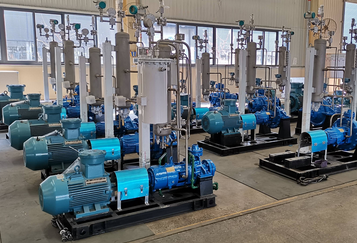Operation monitoring and diagnosis technology of centrifugal pumps
As a fluid conveying equipment widely used in industrial production, the operating status of centrifugal pumps is directly related to production efficiency and safety. Therefore, it is crucial to effectively monitor and diagnose the operation of centrifugal pumps. The following is a brief introduction to the operation monitoring and diagnosis technology of centrifugal pumps:
1. Operation monitoring
Current monitoring: By detecting the current changes of the motor, the operating status of the centrifugal pump can be indirectly reflected. During normal operation, the current should be stable within the rated range; if the current fluctuates abnormally, it may indicate that there is a fault inside the pump, such as impeller wear, bearing damage, etc.
Temperature monitoring: Monitor the temperature of key components such as bearings and motor windings to ensure that they operate within the allowable range. High temperature may indicate poor lubrication, overload or cooling system failure.
Vibration monitoring: Vibration is an important indicator of the operating status of a centrifugal pump. By installing a vibration sensor, the vibration of the pump can be monitored in real time, and spectrum analysis can be performed to determine the source of the fault. Abnormal vibration may be caused by imbalance, looseness or bearing failure.
Flow and pressure monitoring: Observe the inlet and outlet flow and pressure of the pump to ensure that it meets the design requirements. Changes in flow and pressure may reflect a decrease in pump performance or changes in system resistance.

2. Fault diagnosis
Sound diagnosis: Experienced operators can judge whether the pump is normal by listening to the sound of its operation. Abnormal sounds may indicate problems such as bearing damage, friction between the impeller and the casing.
Data analysis: Use modern signal processing technology to conduct in-depth analysis of the monitored data and extract characteristic information reflecting the operating status of the pump. Combined with expert systems or machine learning algorithms, automatic fault identification and early warning can be achieved.
Comprehensive diagnosis: Combine multiple monitoring parameters such as current, temperature, vibration, flow and pressure for comprehensive analysis and judgment. By comparing historical data and standard values, the cause and location of the pump failure can be accurately diagnosed.




